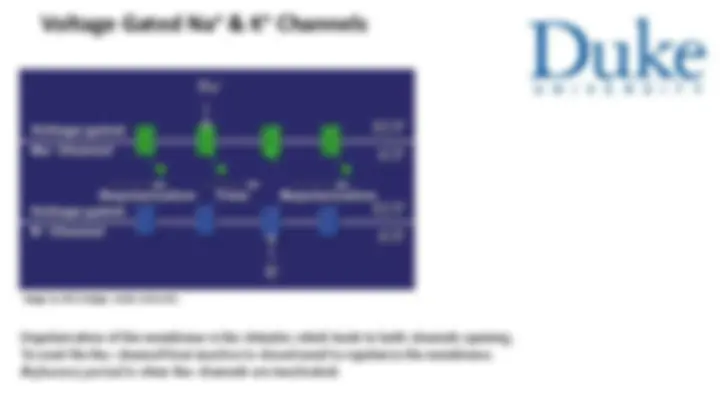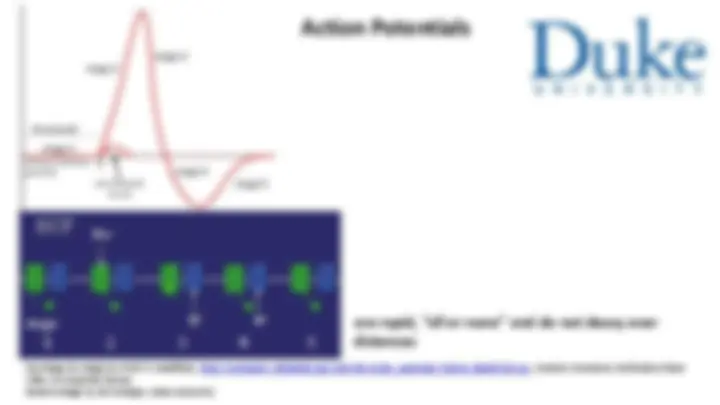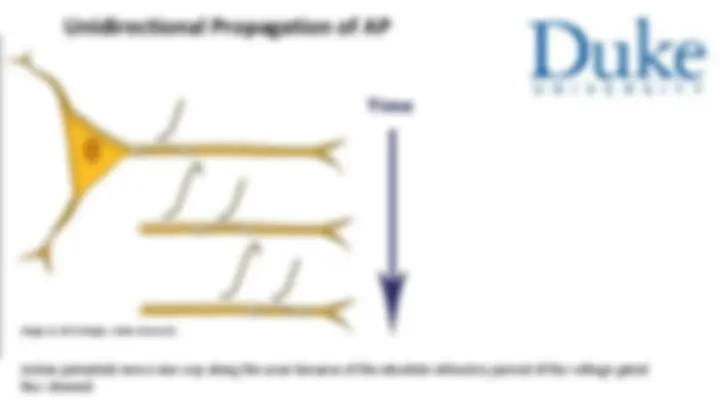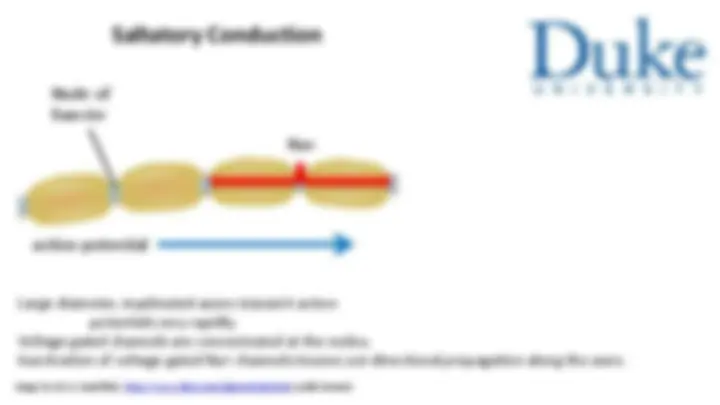







Study with the several resources on Docsity

Earn points by helping other students or get them with a premium plan


Prepare for your exams
Study with the several resources on Docsity

Earn points to download
Earn points by helping other students or get them with a premium plan
Community
Ask the community for help and clear up your study doubts
Discover the best universities in your country according to Docsity users
Free resources
Download our free guides on studying techniques, anxiety management strategies, and thesis advice from Docsity tutors
An overview of action potentials, their causes, and the role they play in the communication within the nervous system. Topics covered include the differences between neurons and glial cells, the organization of the nervous system, and the methods of communication through action potentials. The document also discusses the process of depolarization and repolarization, the refractory period, and the unidirectional propagation of action potentials.
What you will learn
Typology: Study notes
1 / 9

This page cannot be seen from the preview
Don't miss anything!






are rapid, “all or none” and do not decay over distances
stage
top image by image by Chris73 (modified), http://commons.wikimedia.org/wiki/File:Action_potential_%28no_labels%29.svg, Creative Commons Attribution-Share Alike 3.0 Unported license bottom image by Rick Melges, Duke University
Action potentials move one-way along the axon because of the absolute refractory period of the voltage gated
Na+ channel.
image by Rick Melges, Duke University
image by Rick Melges, Duke University
Large diameter, myelinated axons transmit action potentials very rapidly. Voltage gated channels are concentrated at the nodes. Inactivation of voltage gated Na+ channels insures uni-directional propagation along the axon.
image by OCAL (modified), http://www.clker.com/clipart-9828.html, public domain